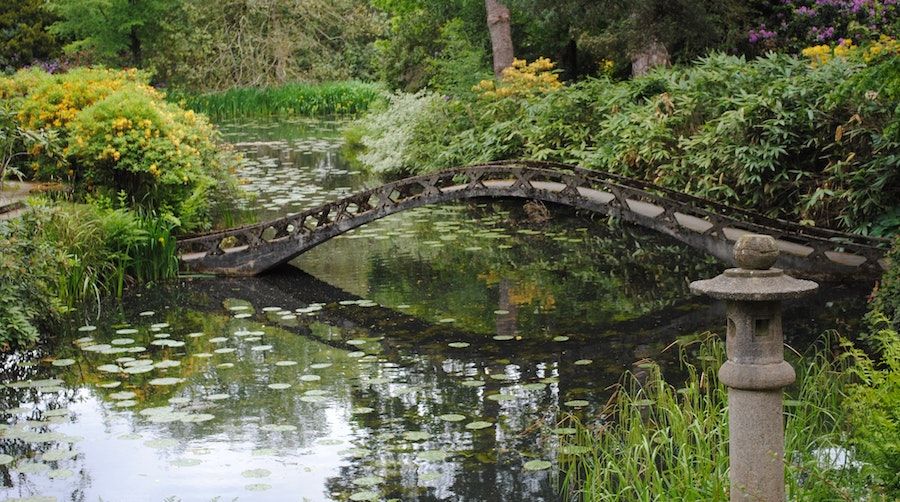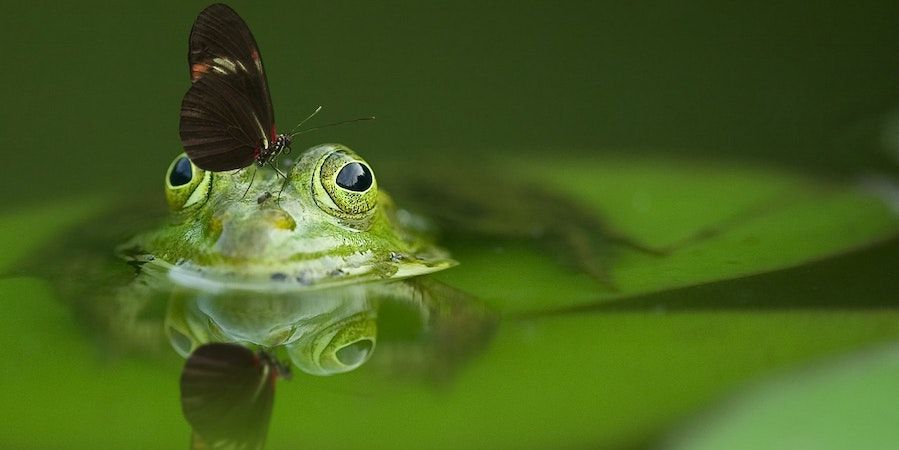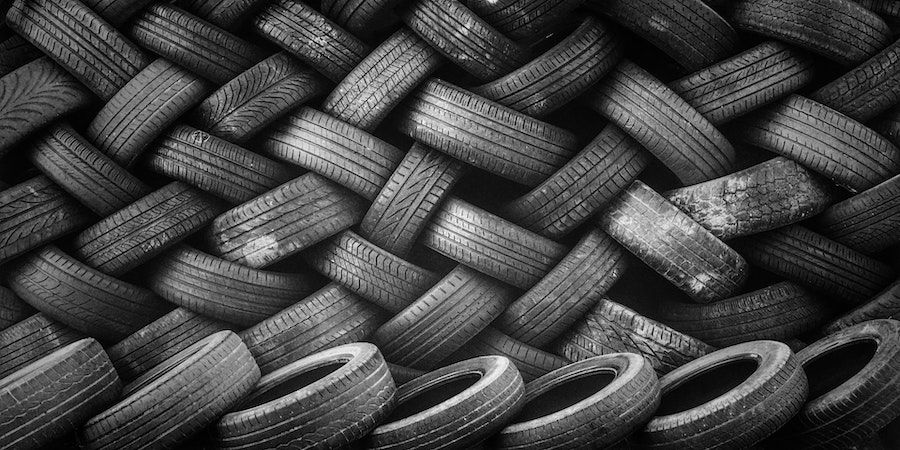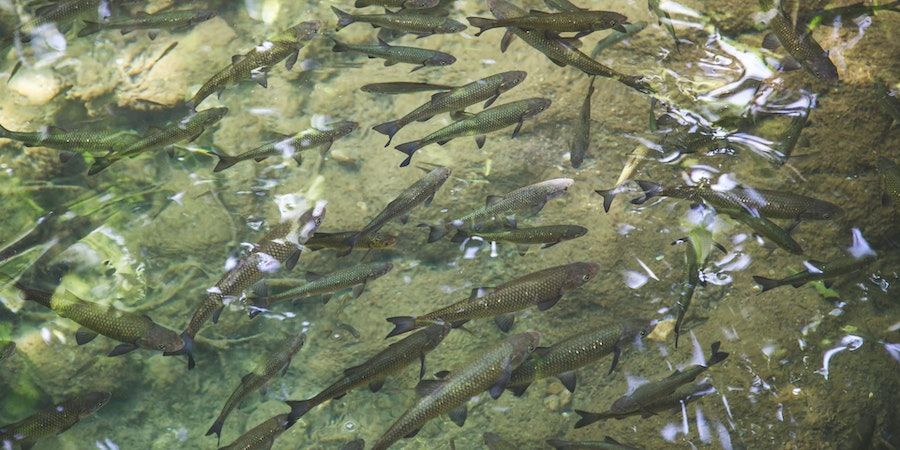When building a pond for your backyard there comes a point where you have to ask yourself; what are you going to line your pond with to make it waterproof? There are countless options to choose from and every pond builder will have their favorite lining material.
This post goes into the details surrounding two of these options. Settle in for a blow by blow account of two heavy hitters. It’s pond liner vs. rubber roofing. Who’s going to come out on top? Read on to find out.
Pond Liner vs. Rubber Roofing
|
Pond Liner |
Rubber Roofing |
|---|---|
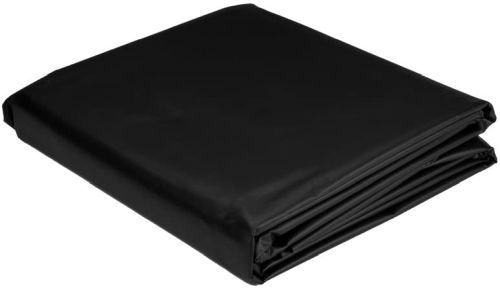
|
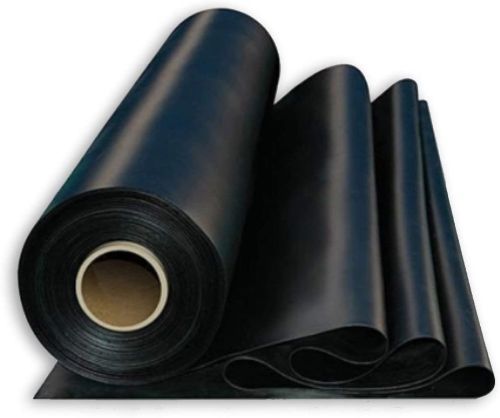
|
|
|
Pond Liner
- Non-toxic
- Promotes beneficial bacteria
- Designed specifically for ponds
- Expensive
- Susceptible to damage from rocks and roots
|
|
As the name suggests, this is a liner designed for ponds. It’s a flexible geomembrane material that is made out of a variety of plastics or rubber. High-density polyethylene is considered by many to be the premium choice. It’s flexible, highly puncture resistant and lighter than a lot of the other materials available.
Another common material used for pond liners is ethylene propylene diene terpolymer, or EPDM. This is the same material that most rubber roofing is made out of, but the differences between the two applications are important and discussed below.
Benefits
Because pond liners are designed specifically for this purpose, you shouldn’t have to worry too much about whether or not pond lining will work for you. The thickness will be sufficient for the job at hand and it won’t be coated or manufactured out of anything that is toxic to fish or plants. In fact, many pond liners have a textured surface which creates a good foundation for beneficial bacteria to thrive.
Keeping water where you want it isn’t the only benefit of lining your pond. It also helps to keep debris and sediment from entering your pond from below, so your pond stays cleaner for longer.
You should be able to find what you need in the gardening/outdoor section at any hardware store. If you’re using a professional installer they should be able to recommend the best liner and will be familiar with the product. It comes in large rolls in varying widths that should fit your needs. It’s possible to join two sheets if necessary. Special care should be taken at these joins to prevent leaking at the seams.
Shortcomings
Image credits: Pixabay via pexels.com
When installing your pond liner, you need to be careful so as not to rip the material. Sharp rocks or tree roots might pose a danger to the integrity of the liner. However, it’s not fragile stuff, so with a bit of care you should be able to install it without too many mishaps.
The upfront cost with pond liner is also high, compared to using rubber roofing. However, the upfront investment should mean you have a problem free pond for years to come.
Where It Works
If you’re planning on having fish and a diversity of plant life in your pond, then going with a pond liner is the safest bet for you. Especially if you plan on having koi in your pond, there’s no reason not to use pond liner.
Choosing to go with a pond liner is the easy option. You can go to the store and buy exactly what you need without any other thoughts or considerations. It’s the correct tool for the job.
Rubber Roofing
- Very heavy duty
- Cheaper
- May be easier to find
- Toxic additives
- Comes in narrow rolls
- Expensive to cut to size
|
|
Used primarily as a roofing material, rubber roofing is made out of a blend of recycled tyres, sawdust, and slate dust. The fancy name for all this is ethylene propylene diene terpolymer, or EPDM.
Benefits
Because this material is used mostly as an outer roof covering, it’s highly waterproof. Rubber roofing usually comes in rolls which are installed as overlapping sheets. Although it’s also available in shingles and comes in a variety of colors.
Depending on your location and the available distributors in your area, you may be able to find rubber roofing at a cheaper price compared to pond liner material. Prices vary though, so you’ll have to do your own research on local prices in your area.
Shortcomings
Image credits: Imthaz Ahamed via Unsplash
The question remains though; can you use rubber roofing for a pond liner? Although highly waterproof and designed to withstand the harshest environments, rubber roofing may not be the best choice for your backyard fish pond. At the very least, here are some shortcomings you should be aware of before you choose rubber roofing to line your pond.
First of all, most people don’t want anything living on their roof. For this reason, rubber roofing is coated in all sorts of things to prevent the growth of algae or any other type of bacteria or mould.
This is only a good thing for your pond if you don’t want anything at all to survive in the water. Common coatings include copper and zinc, which can be fatal to fish and plants alike. Talcum powder is also often spread on rubber roofing, but this can be washed off with a bit of elbow grease and determination.
You may be able to find a friendly building contractor in your area that can order the material for you without the added talcum powder and other toxins, but no promises there.
Although buying a roll of rubber roofing may be cheaper than buying a roll of pond liner, getting it cut to your desired size will make the purchase significantly more expensive. And joining sheets of rubber roofing has to be done with great precision to make sure there are no leaks between the layers.
Where It Works
Image credits: Milada Vigerova via Unsplash
If you don’t plan to have any fish in your pond, then rubber roofing can absolutely do the job. The tough materials will last even if submerged in water at all times.
It may be the cheaper option depending on where you live and who you know. It’s also possible to find rubber roofing offcuts at building sites if your budget is really tight.
Just remember that the material will need a thorough washing before you install it, even if you aren’t planning on introducing fish. You don’t want your pond to become a cesspool of toxic sludge with all the additives that are added to rubber roofing.
Which Is Best For You?
As you can see, pond liner and rubber roofing are similar products with very different applications. Which one works for you is a matter of preference and depends on what you’re planning to achieve with your pond.
Using the right tool for the job is often the most simple way of doing things, although not always the cheapest. If you can afford it, using pond liner will give you the peace of mind that you paid for.
If you decide to go the rubber roofing route, make sure you’ve given it a good wash before you install it. It’s also worth trying to track down rubber roofing that hasn’t been coated in any toxic additives. You don’t want to have to start over with a big project like a backyard pond.
That being said, there are many reports about people having no adverse side effects when using rubber roofing for their fish ponds, so it may come down to luck of the draw.
In Closing
If you take special precautions to make sure that the rubber roofing you use to line your fish pond is free of toxins and any nasty additives, this may be a cost effective route to take.
Be aware that rubber roofing can be lethal to fish and other pond life if you didn’t take the necessary care before installation. If you don’t plan on having any fish in your pond, then rubber roofing may be an adequate solution for your needs.
Pond liner, on the other hand, is ready to go direct from the manufacturer. There won’t be anything on the liner that’s toxic to fish or other pond life and the textured surface will help beneficial bacteria to grow on the bottom of your pond.
You pay for this peace of mind though, and pond liners often end up more expensive than using rubber roofing instead.

